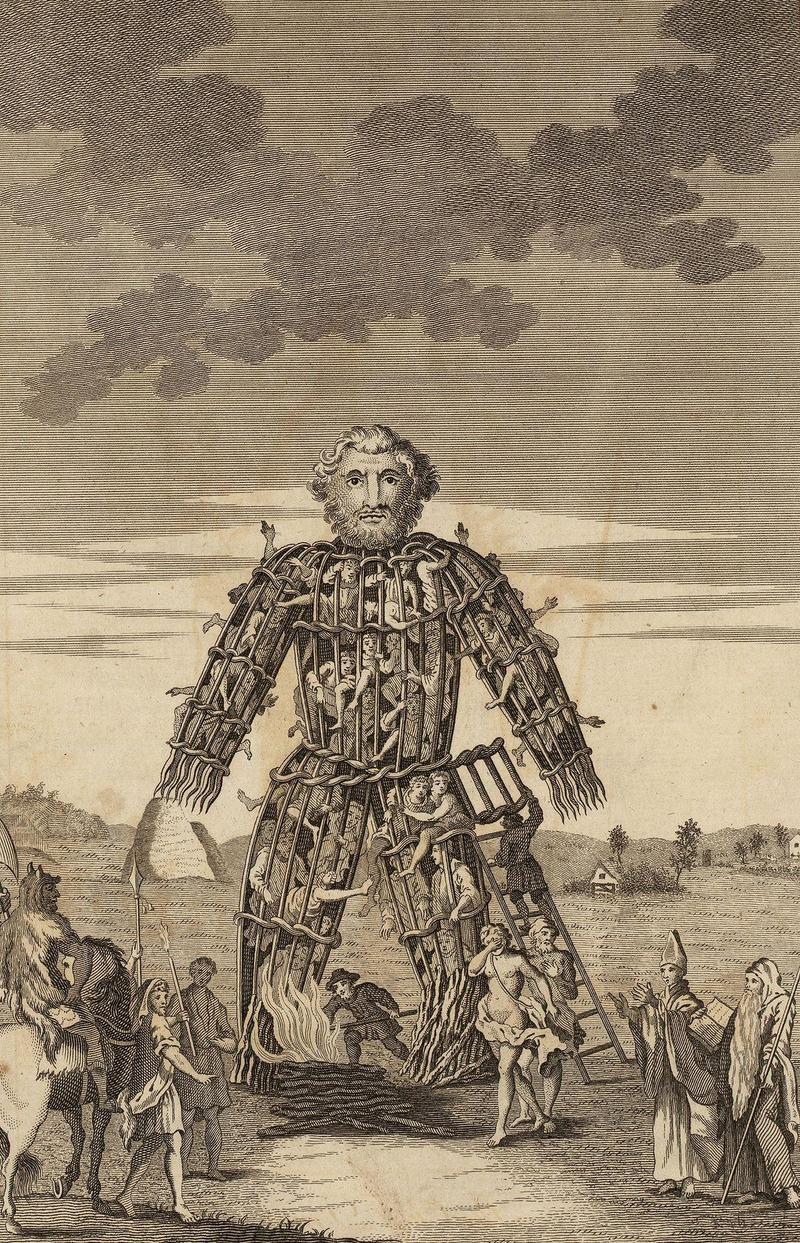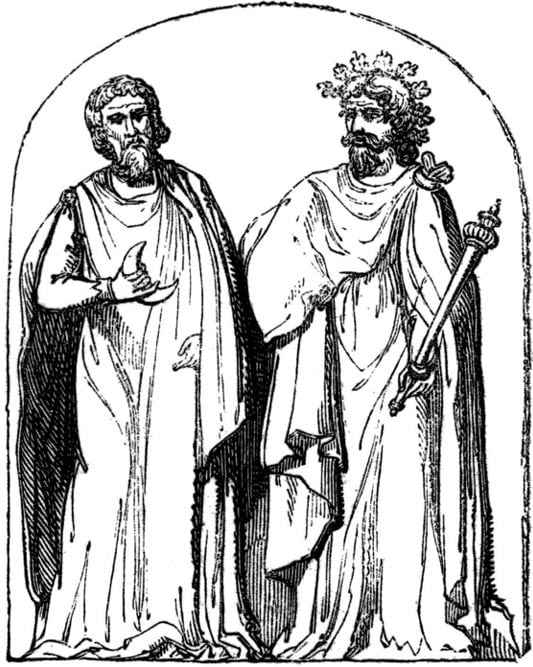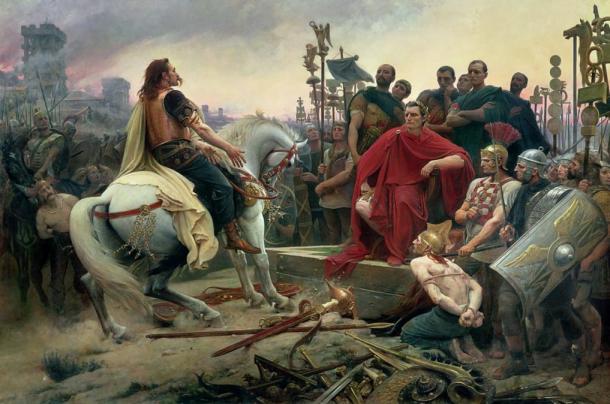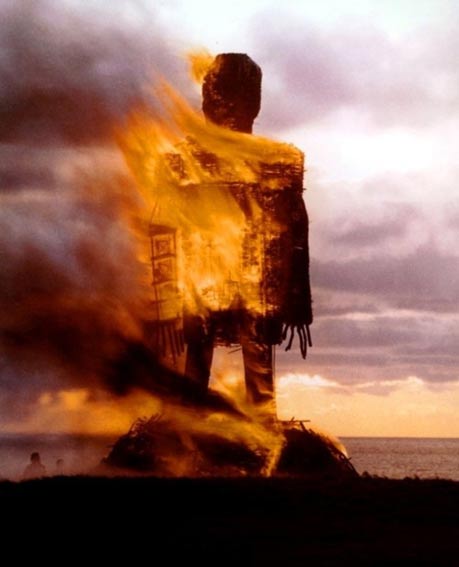History of The Wicker ManMay 11, 2018

The wicker man is purported to be among the ways in which the ancient druids made human sacrifices. According to a range of classical writers, the druids partook in human sacrifice, although these writers usually didn’t define how these sacrifices were completed. Nevertheless, references into some kind of druid human sacrifice that used the ‘wicker man’ could be discovered in just two classical resources. ( Public Domain )
Second-Hand Knowledge of the Druids
The druids were a category of people inside the societies of the Celts who inhabited Britain and France. Almost everything we know about the druids now could be considered second-hand knowledge. Known surviving texts which mention them were composed by non-druids, most notably the Roman leader Julius Caesar.
The druids were believed to be very revered, and played a variety of significant roles in their community. The druids functioned, among other things, as judges, teachers, philosophers, and mediators between human beings and gods. Ancient sources write the druids frequently performed human sacrifices, which might or might not be accurate. If it’s accurate, among the ways by which the druids allegedly sacrificed their victims was using a device now called a ‘wicker man’.

“Two Druids”, 19th-century engraving according to a 1719 illustration by Bernard de Montfaucon. ( Public Domain )
The Gallic Wars
In Julius Caesar’s The Gallic Wars, it is recorded that the Celtic tribes inhabiting the region of Gaul were extremely superstitious. Additionally, Caesar wrote the Celts thought “that unless the life of a man be offered for the life of a man, the mind of the immortal gods cannot be rendered propitious”. Thus, human sacrifices were said to have been commonly performed by druids employed by those who were afflicted by acute diseases or engaged in conflicts or dangers. Nevertheless, human sacrifices “ordained for national purposes” might have been performed.

“Vercingetorix Throws Down His Arms at the Feet of Julius Caesar”, 1899, by Lionel Noel Royer ( Public Domain )
Caesar additionally claimed that human sacrifices involving offenders were “more acceptable to the immortal gods”, although when supply was short, an innocent could also be forfeited. During the discourse of Celtic human sacrifice, Caesar provides a single example of the means by which the druids completed this task, which involved “figures of vast size, the limbs of which formed of osiers they fill with living men,” These figures would be the so-called ‘wicker men’, which could subsequently be put on fire, and the men inside them would be destined to die in the fires.
Strabo’s Geography
This type of human sacrifice may likewise be found in Strabo’s Geography. This ancient author claimed the Celts “devised a colossus of straw and wood” for the purpose of sacrifice. Unlike Caesar, however, Strabo records that “cattle and wild animals and all sorts of human beings” were thrown to the colossus, and subsequently burnt. Strabo also claims that the ‘wicker man’ was just one method of human sacrifice, and two other examples of the way the druids performed human sacrifices are given, “they would shoot victims to death with arrows, or impale them in the temples”

Strabo as portrayed in a 16th-century engraving ( Public Domain )
Wicker man today
In fact, it’s unknown if the druids really utilized ‘wicker men’ for human sacrifices. It was argued, for example, that such a device would have been neither practical nor realistic. Although wicker objects are believed to be rather strong, they’d lose their structural integrity very quickly when put on fire.
A live creature or individual within a ‘wicker man’ can also struggle and break it in an attempt to escape. It might be possible that many people / animals ready for the sacrifice were drugged before being put in the ‘wicker man’, although neither Caesar nor Strabo listed this type of practice.
The narrative of the ‘wicker man’, that may have been very obscure, became popular due to some 1973 British horror movie called The Wicker Man. This movie revolves around a devoutly Christian Scottish police sergeant who is sent to an isolated Hebridean island called Summerisle to investigate the disappearance of a young woman. The climax of this movie takes place when the sergeant is sacrificed by the people of the island, who are pagans, in a ‘wicker man’.

Scene from the film ‘The Wicker Man’ (1973). ( Curnblog )
The ‘wicker man’ can also be utilized in the current neopagan practices, especially for the celebration of a fire feast or at harvest time. Fortunately, however, people / animals, are no longer put in this structure.

Burning a contemporary wicker man. ( Wicker Paradise/CC BY 2.0 )
References
Jarus, O., 2014. Who Were the Druids?.
Available at: http://www.livescience.com/45727-druids.html
Julius Caesar, The Gallic Wars
Available at: http://classics.mit.edu/Caesar/gallic.html
Phillips, S., 2013. The Various Versions of The Wicker Man.
Available at: http://www.steve-p.org/wm/
Strabo, Geography
Available at: http://penelope.uchicago.edu/Thayer/E/Roman/Texts/Strabo/home.html
Wigington, P., 2015. What is a Wicker Man?.
Available at: http://paganwiccan.about.com/od/glossary/g/WickerMan.htm
Be the first to post a message!